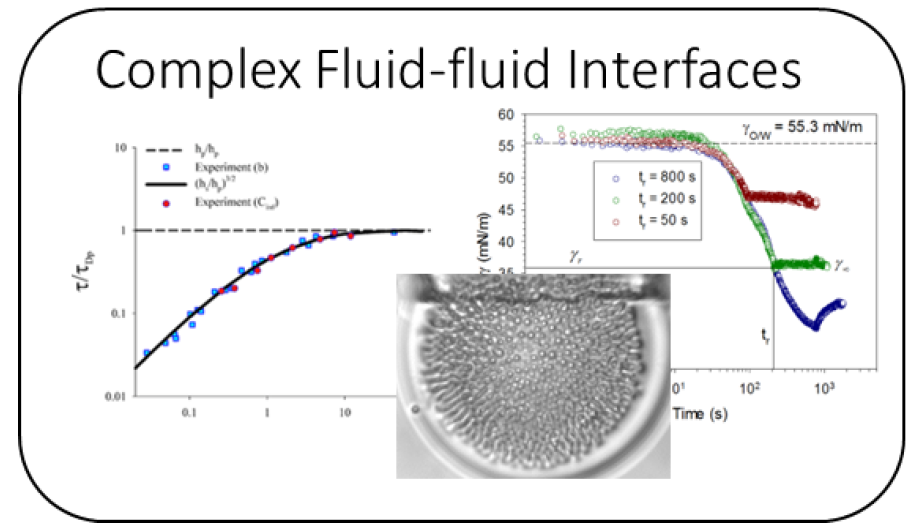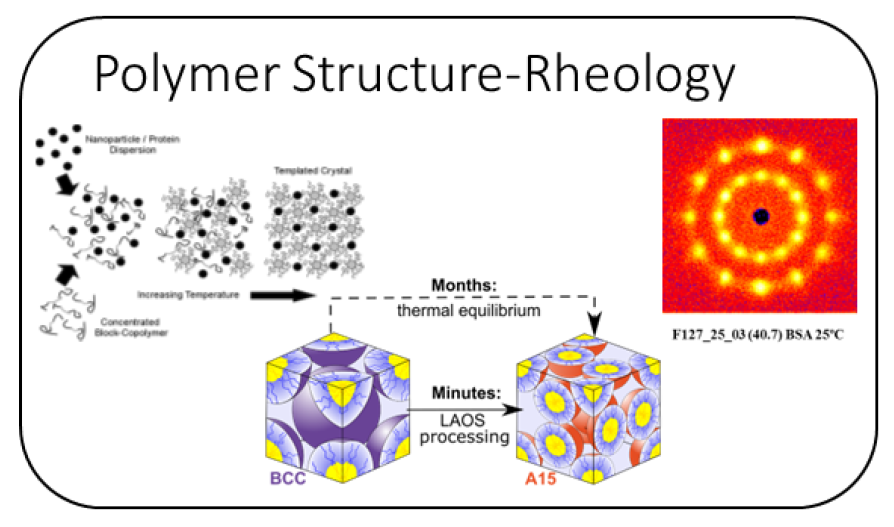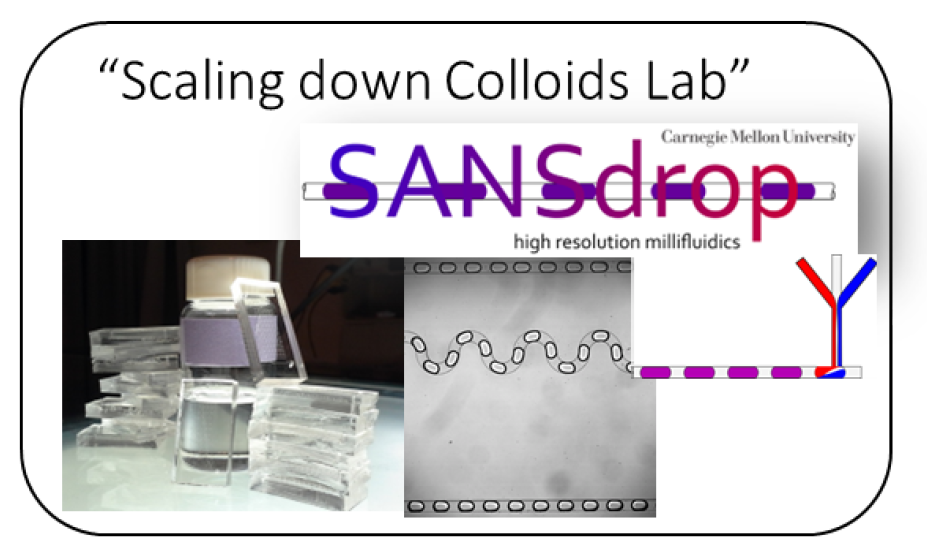Three current themes within the group include:

Engineering of multiphase materials (foams, emulsions, and blends) requires control of the composition and properties of fluid-fluid interfaces during processing. Mechanics of interfaces between two fluids (liquid-liquid and gas-liquid) are controlled by both the concentration of adsorbed species and history of deformation of these often nonequilibrium states. Interfacial properties in turn relate directly to macroscopic properties ranging from the stability of an emulsion, the deformability of a droplet in a microfluidic device, and the structure of a filament in 3D printing. Through manipulation of the physics of curvature of microscale interfaces, we have developed tools to characterize multicomponent and complex interfaces under external fields (shear and electric fields) and during processing (changes in bulk phases, composition). Current focus is on the control of fluid-fluid interfaces using macromolecular complexes that respond to stimuli (external or due to the environment). We have observed the significant impact of complex structure at an interface and the ability to “solidify” interfaces through a shift from polymer-like adsorption to particle-like adsorption. Our goal is to make this a controllable phenomenon rather than a response and generate emulsions and foams with switchable stability.

We are working to push the understanding of shear induced changes in polymeric materials in new directions. Currently, we are tackling the problem of the impact of shear and deformation fields on chain structure; to determine the required flow fields to induce scission in polymers melts and enhance molecular transport. This will allow development of approaches to combined mechanical and catalytic depolymerization of polyolefins. For the last decade, focused has been on the impact of shear on the nano- and microscale structures of self-assembled materials. Solvent swollen block polymers and surfactants are dominated by self-assembly and complex intra and inter-molecular interactions. The forces defining the structure are easily manipulated by external fields. In these systems, the structures that form are non-ergodic and mobility of molecules within the system provides a dynamical control parameter that is not as accessible in high molecular weight block polymer melts. We are using shear fields to control the nanoscale structure of these block polymer micelle materials. Using our expertise in rheology and in situ small-angle scattering techniques, we are attacking the impact of flow fields on phase behavior in block polymer solutions and composites.

We are developing new tools for High compositional resolution characterization of multicomponent formulations. In multicomponent fluid formulations, phase and structural spaces are so complex that potentially relevant or problematic structures and phases exist over narrow regions of composition space. Discrete sampling with binary or ternary component mixtures is likely to miss phenomena and structures that negatively impact processing or, in some cases, offer novel material properties. We are developing different classes of microfluidic and millifluidic processes that provide high resolution in composition space. Since these techniques provide nearly continuous sampling along composition axes, the data is appropriate for current data mining and ML approaches. We have developed two classes of devices, providing data for problems in liquid-liquid phase separation in aerosol droplets, nanoscale structural transitions in colloidal suspensions, viscosity of protein solutions, and solubility of proteins.